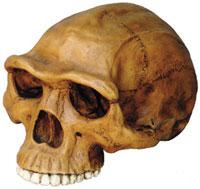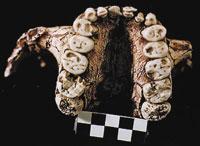The adolescence of the Neanderthal

Adolescence is the result of a slow process of growth of the human being. Monkeys have no life, so they go from being young to being adults. To the hominids it was going to happen another so much. So, when was adolescence born in the human being? We do not know if the man who lived about 500,000 years ago had complex acne, but a new research shows that the Homo erectus passed them as our grandparents, who went from being children to being adults. Therefore, in the long evolution of the human species, the human being has begun to be adolescent in the last thousands of years.

Homo erectus, who lived about 1,5 million years ago, already had the basic characteristics of modern man: the body proportion was similar to ours, weight and teeth. Therefore, researchers considered that adolescence would have occurred with Homo erectus, but new research has shown that beliefs were corrupt.
The human being needs between 18 and 20 years to achieve full body maturity. Other species of primates such as chimpanzees and gorillas are sufficient to reach 11-12 years. Scientists have seen that Homo erectus had a growth process similar to that of monkeys, losing their childhood without the prolongation offered by adolescence.
Teeth have been investigated to reach these conclusions. Starting with the dental fossils of the Australopitecus 4 million years ago, the teeth of Homo habilis, Homo erectus, Homo ergaster and Neanderthal have been analyzed, as well as of humans, chimpanzees and contemporary gorillas. The teeth and fossils of the teeth have been revised with special electronic microscopes, which has allowed to visualize the internal structure of the teeth. The teeth grow slowly and this growth is reflected in layers. It is similar to what happens with tree trunks, in which each layer or ring represents a year of tree life. Therefore, the teeth can be cut from side to side and count the enamel layers of the teeth with the help of the electronic microscope.

Measuring the enamel layers reflected in the teeth, researchers have found a way to know the rate of growth of each being. Modern man has a very slow growth and teeth also grow at that rate. The dental fossils studied have shown that growth is slow and late. The body growth of Australopitecus, as fast as chimpanzee and gorillas, has coincided with the expectations of the researchers. But also the Homo erectus has seen a very rapid growth that has surprised the researchers.
On the other hand, seeing when the back piece has come out helps to know better the pace of growth. The rear tile leaves the modern man at 6 years old and the monkeys at 3.5. New research has shown that Homo Erectus was in an intermediate period between 4 and 4.5 years old. The skeleton of a Homo erectus discovered in Kenya in 1984 was considered a young man aged 11 to 12 years. But now it has been seen that the rear shingles had just been released, so it is believed that it would be up to 8 years old. Surprising, since the size of the skeleton is very large, which shows that the Homo erectus had a very fast growth rate.

The similarity with the current man made the researchers think that the Homo erectus was going to have a slow growth rate, with which he was going to have a teenage. In fact, Homo erectus has the same figure as a modern man, with a single difference in the size of the brain. Therefore, scientists believe that the size of the brain can influence the evolutionary rhythm of the body and, consequently, the appearance of adolescence. The largest brain can gather more knowledge and the acquisition of knowledge requires a longer learning process. Therefore, one might think that the long process of learning has been adapting to the rhythm of growth of the body. If Homo erectus did not have an adolescence, the researchers believe he did not need a longer learning process.

The oldest model of slow growth of modern man is the fossil of a Neanderthal of about 120,000 years ago. Researchers at Pennsylvania State University believe that the onset of adolescence would occur between 800,000 and 300,000 years ago. The study of Neanderthal's fossils has shown that they had the same pattern of growth as today's humans, so for more than 300,000 years children have experienced a long process of growth to become adults. Another thing is if young people who are neither children, nor adults, have had the opportunity to live adolescence or, like our grandparents, life has forced them to impose themselves faster than expected by biology.
Published in 7k.
Buletina
Bidali zure helbide elektronikoa eta jaso asteroko buletina zure sarrera-ontzian











